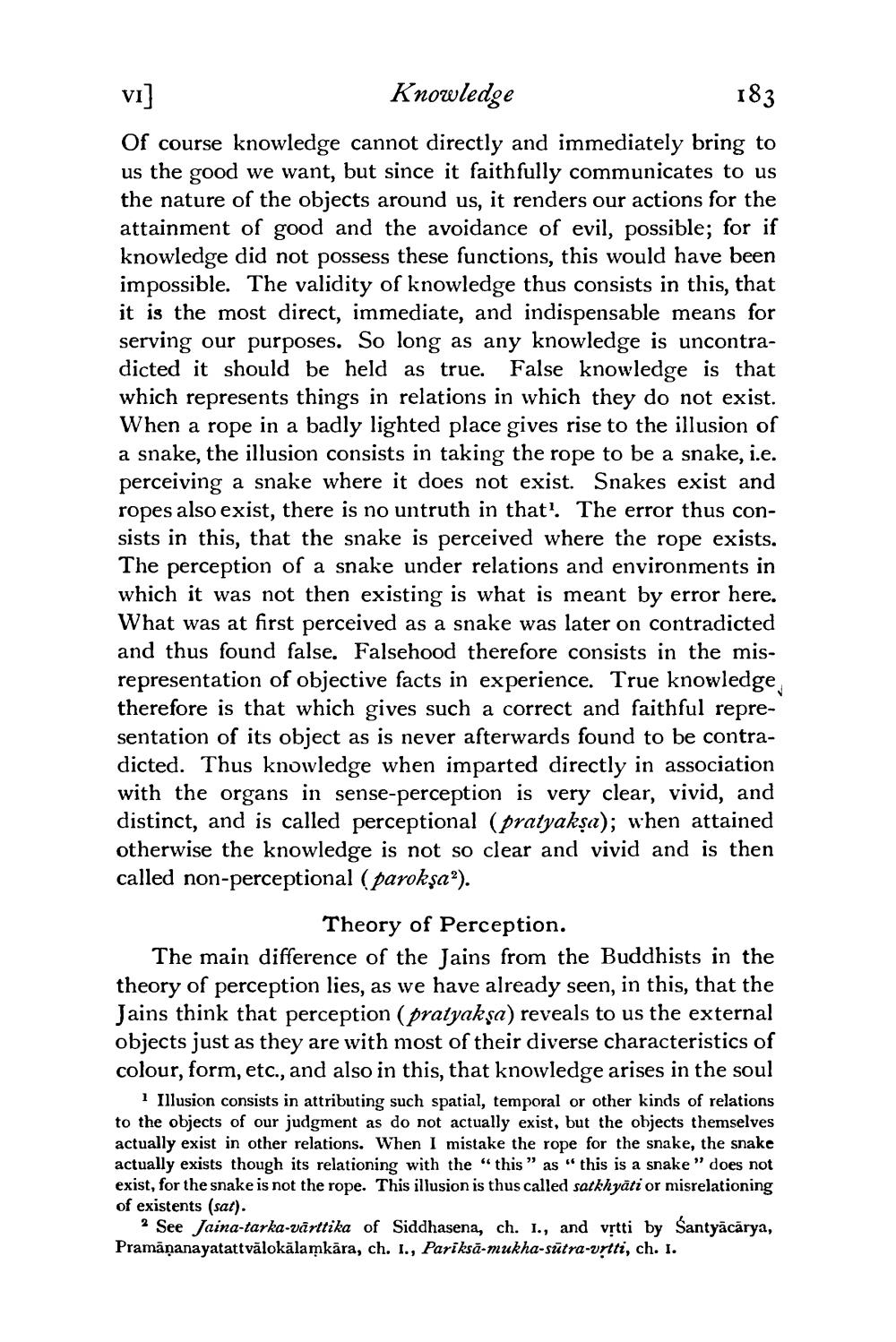________________
vi]
Knowledge
183
Of course knowledge cannot directly and immediately bring to us the good we want, but since it faithfully communicates to us the nature of the objects around us, it renders our actions for the attainment of good and the avoidance of evil, possible; for if knowledge did not possess these functions, this would have been impossible. The validity of knowledge thus consists in this, that it is the most direct, immediate, and indispensable means for serving our purposes. So long as any knowledge is uncontradicted it should be held as true. False knowledge is that which represents things in relations in which they do not exist. When a rope in a badly lighted place gives rise to the illusion of a snake, the illusion consists in taking the rope to be a snake, i.e. perceiving a snake where it does not exist. Snakes exist and ropes also exist, there is no untruth in that'. The error thus consists in this, that the snake is perceived where the rope exists. The perception of a snake under relations and environments in which it was not then existing is what is meant by error here. What was at first perceived as a snake was later on contradicted and thus found false. Falsehood therefore consists in the misrepresentation of objective facts in experience. True knowledge therefore is that which gives such a correct and faithful representation of its object as is never afterwards found to be contradicted. Thus knowledge when imparted directly in association with the organs in sense-perception is very clear, vivid, and distinct, and is called perceptional (pratyaksa); when attained otherwise the knowledge is not so clear and vivid and is then called non-perceptional (parokşaa).
Theory of Perception. The main difference of the Jains from the Buddhists in the theory of perception lies, as we have already seen in this, that the Jains think that perception (pratyakşa) reveals to us the external objects just as they are with most of their diverse characteristics of colour, form, etc., and also in this, that knowledge arises in the soul
1 Illusion consists in attributing such spatial, temporal or other kinds of relations to the objects of our judgment as do not actually exist, but the objects themselves actually exist in other relations. When I mistake the rope for the snake, the snake actually exists though its relationing with the "this " as "this is a snake" does not exist, for the snake is not the rope. This illusion is thus called satkhyāti or misrelationing of existents (sat).
? See Jaina-tarka-vārttika of Siddhasena, ch. i., and vịtti by Santyācārya, Pramāṇanayatattvālokālamkāra, ch. I., Pariksā-mukha-sūtra-vrtti, ch. I.




